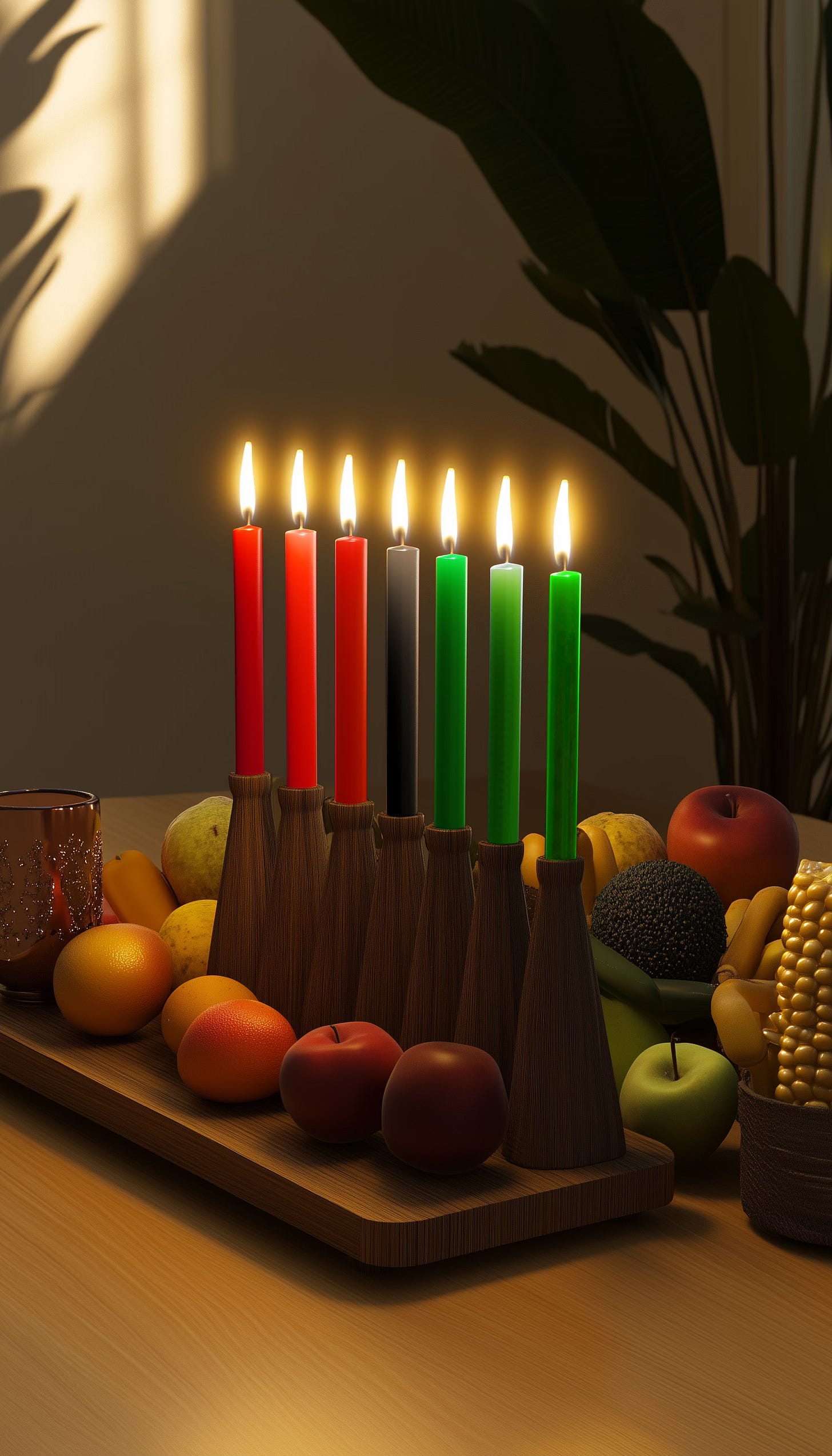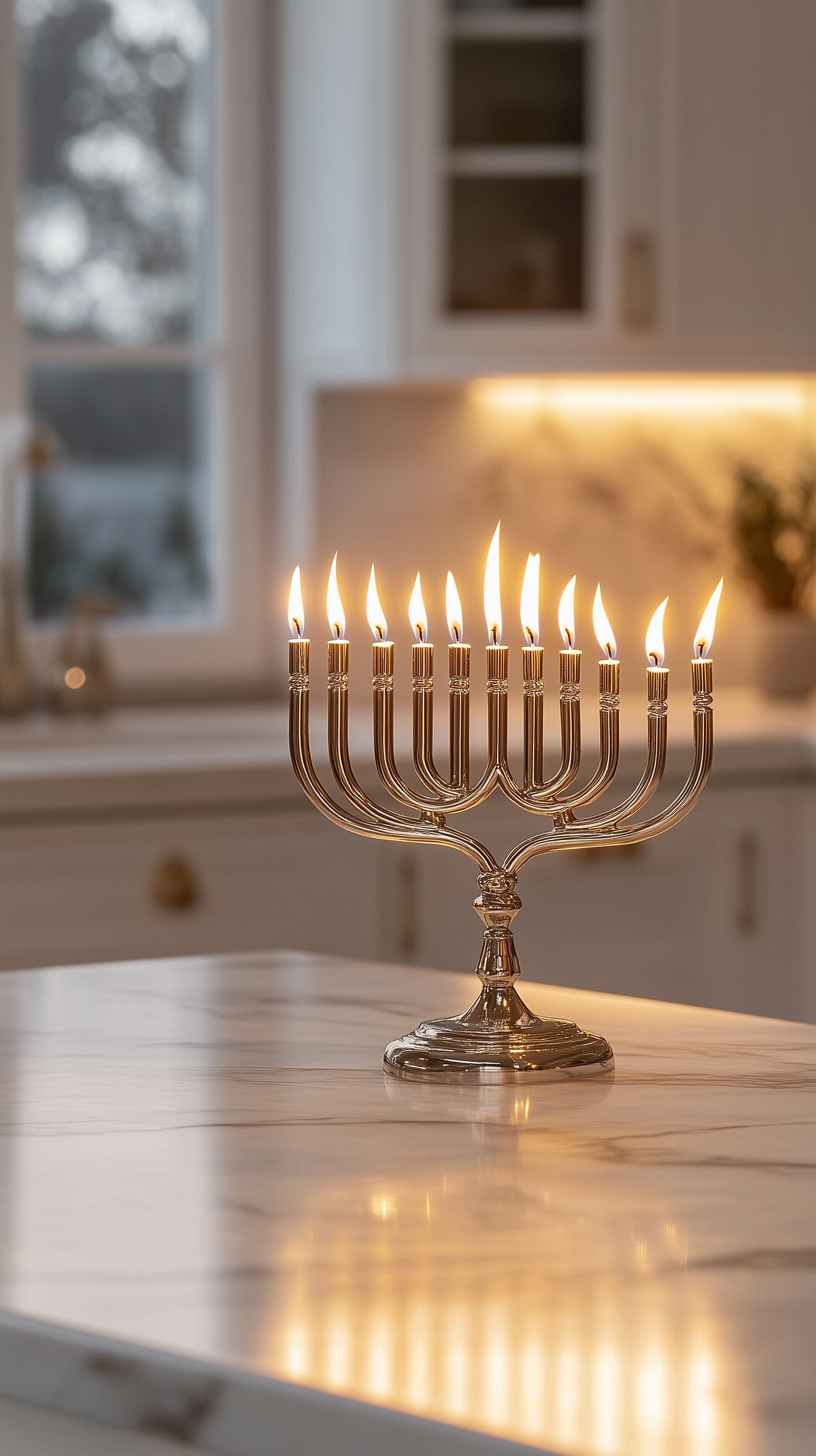Hanukkah and Kwanzaa are two unique holidays celebrated during the winter season, each with its own rich traditions, profound symbolism, and meaningful rituals centered around candles. While they originate from distinct cultural and historical contexts, both holidays inspire reflection, unity, and a celebration of resilience. Let’s explore the benefits of these holidays, compare their observances in the U.S., and delve into the deeper meaning of their candle rituals.
5 Benefits of Celebrating Hanukkah and Kwanzaa
Promotes Cultural Identity and Heritage
Hanukkah: Celebrates the rededication of the Second Temple in Jerusalem and the resilience of the Jewish people, fostering a sense of cultural pride and connection to Jewish history.
Kwanzaa: Honors African heritage and values, offering a space for African Americans to reconnect with their roots and celebrate their cultural legacy.
Encourages Reflection on Core Values
Both holidays emphasize essential principles—Hanukkah focuses on faith, perseverance, and miracles, while Kwanzaa highlights values like unity, self-determination, and collective work.
Fosters Family and Community Bonding
Both holidays encourage gatherings with loved ones, sharing meals, stories, and rituals that strengthen family ties and community bonds.
Symbolizes Light Over Darkness
The candles lit during both holidays symbolize hope, resilience, and the triumph of light over adversity. This universal message resonates across cultures.
Provides Opportunities for Education and Inclusion
Celebrating or learning about Hanukkah and Kwanzaa promotes understanding and appreciation of diverse traditions, fostering a more inclusive society.
A Personal Reflection on Hanukkah
When my daughter was younger, she couldn’t resist the urge to blow out the candles on the menorah as though it were a birthday cake. Each time my dad lit the menorah, she would giggle with excitement, ready to puff out the flames in one go. While it made for a sweet and humorous moment, we gently explained to her that the candles must be allowed to burn fully.
In Jewish tradition, the menorah candles are lit to honor the miracle of the oil that lasted eight days during the rededication of the Second Temple. Allowing the candles to burn symbolizes the enduring light and faith of the Jewish people. Extinguishing them would interrupt this ritual of remembrance and respect.
This tradition became a beautiful teaching moment for her, illustrating how rituals can carry deep meaning and bring us closer to our heritage.
Comparison of Observances in the U.S.
Hanukkah: Celebrated by approximately 2% of the U.S. population, equating to around 6.6 million Jewish Americans.
Kwanzaa: Celebrated by about 1%-3% of the U.S. population, primarily within the African American community, representing approximately 2-10 million people.
While Hanukkah is rooted in religious traditions, Kwanzaa is a cultural holiday, and many African Americans celebrate it alongside Christmas or other winter festivities.
Origins of the Holidays
Hanukkah: Originates from the rededication of the Second Temple in Jerusalem around 165 BCE, following the Jewish victory over the Seleucid Empire. The lighting of the menorah commemorates the miracle of the oil that lasted eight days despite being sufficient for only one.
Kwanzaa: Created in 1966 by Dr. Maulana Karenga as a way to honor African heritage and foster unity among African Americans. It draws from African harvest festivals and is celebrated from December 26th to January 1st.
The Meaning of the Candles
Hanukkah:
The menorah (or hanukkiah) holds nine candles: one for each night of Hanukkah and a central “helper” candle called the shamash.
The candles represent the miracle of the oil and the perseverance of the Jewish people. Lighting one additional candle each night symbolizes increasing light and hope. Candles are allowed to burn fully as a reminder of the enduring nature of faith and miracles.
Kwanzaa:
The kinara holds seven candles: three red, three green, and one black. Each candle represents one of the Nguzo Saba (the Seven Principles):
Black: Unity (Umoja) — the foundation of community.
Red: Struggle and sacrifices made for progress.
Green: Hope and the future aspirations of the African diaspora.
One candle is lit each night to reflect on a principle, fostering dialogue and intention within families and communities.
Conclusion: A Season of Shared Light
Hanukkah and Kwanzaa may differ in their origins and observances, but they share a common thread of celebrating light, resilience, and cultural pride. By learning about and honoring these holidays, we gain a deeper appreciation for the diversity that enriches our world.
Whether lighting the menorah or the kinara, these rituals remind us that even in the darkest times, there is always light to guide us forward. Candles of culture and connection, they symbolize the enduring resilience and hope found in both Hanukkah and Kwanzaa. This winter season, may we all find inspiration in these celebrations of unity, heritage, and hope.







